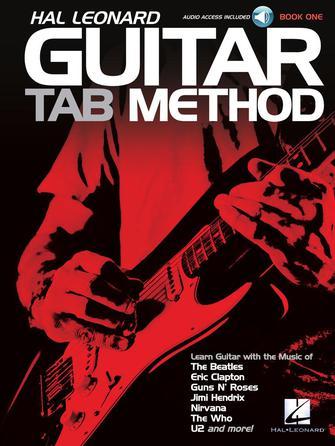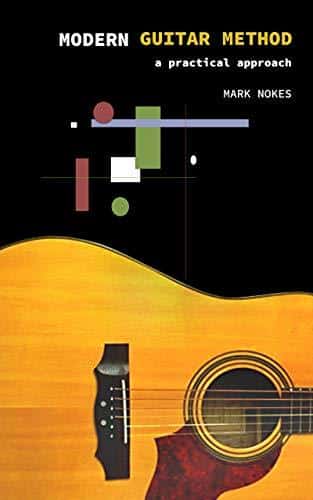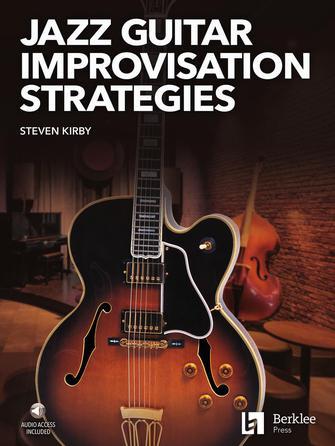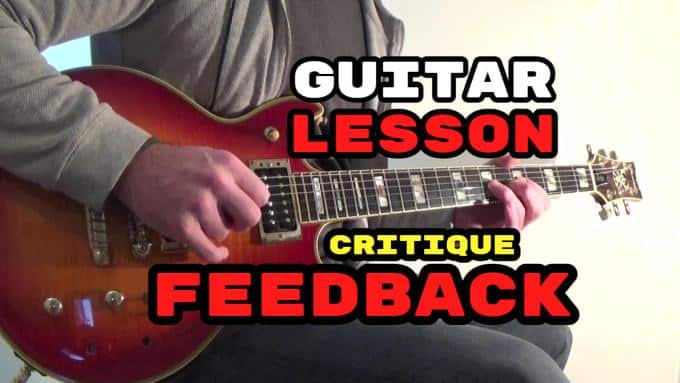Have you ever slid your fingers across a guitar’s fretboard, yearning to create music that pierces the soul? If so, you’re likely familiar with the hurdles that the learning curve presents. Make no mistake, there is no shortcut or magic potion for instant mastery. However, an effective teaching method can undoubtedly act as a catalyst in this journey. Enter William Leavitt’s ‘A Modern Method for Guitar,’ a series that has been the cornerstone of guitar pedagogy for numerous enthusiasts and professionals alike. But does the book truly live up to its acclaimed reputation? As a seasoned guitar player and instructor, I’m eager to explore this instructional series and dissect its methodologies, techniques, and effectiveness. In the following paragraphs, I’ll delve into an in-depth review of ‘A Modern Method for Guitar’ to provide you with a comprehensive understanding of what the series entails, and most importantly, if it meets your musical aspirations.
Unearthing William Leavitt’s Method
Exploring the Volumes

Having delved deeply into the layers of William Leavitt’s method, let us now throw light on the significance of the ‘A Modern Method for Guitar Volumes’ as part of our journey. The series consists of three volumes, each contributing uniquely to guitar mastery. I’ve always respected the depth brought in by separate volumes and this series is no different.
Volume 1 Guitar book, the starting point, carefully constructs a solid foundation. It instills basic concepts and techniques, ensuring a smooth transition for beginners to the complex realms of guitar playing. It stands out with its systematic approach and meticulous attention to detail.
Volume 2 and Volume 3 further embellish the repertoire with advanced techniques and refined methodologies, fostering exponential growth in the learner’s skill. They serve as the ideal bridges between basic and expert level, encouraging creative exploration.
In essence, the volumes succeed in creating a comprehensive repository of guitar learning. They hold relevance across a broad spectrum of learners, reiterating Leavitt’s genius in blending simplicity with nuanced learning pathways. Assessing the integral role of each volume within this series renders us better prepared to explore his methodology and technique, our next stop in this expedition of discovery.
Methodology and Technique

Turning our attention to Methodology and Technique, it becomes evident how this aspect shapes Leavitt’s instructional series comprehensively. The marriage of guitar teaching methodology with classical guitar technique forms the underpinnings of his distinctive approach.
As someone deeply invested in guitar pedagogy, I find a profound resonance with Leavitt’s belief that method and technique are like the entwined strands of a robust chord. I’ve spent considerable time, not only playing but also engraving and transcribing music. These experiences have contributed immensely to my grasp of distinct guitar techniques and their application in a nuanced teaching methodology.
Leavitt’s instructions provide more than just a plectrum technique guide. His emphasis on stylus-driven strokes marks a significant departure from the fingerpicking style common in traditional guitar pedagogy. Sure, strumming with a plectrum might seem simple by comparison, but much of the beauty in guitar playing comes from subtle interchanges between pick and fingers, tracing an intricate panorama of sound. Leavitt weaves this understanding seamlessly into his method.
It’s compelling to observe how his approach is not merely a set of instructions, but an instructional journey he guides you through, with each technique building upon the last. The result is a progressive spiral that challenges and captivates, leading one to explore the guitar’s vast potential.
The gold lying underneath this teaching methodology is that it molds adaptive, technically sound players, adequately prepared to face any musical challenge thrown their way. With his series, Leavitt does not merely teach guitar; he nurtures musicians.
As we proceed to the next chapter, ‘Evaluating Effectiveness and Suitability’, we will explore how this nexus of method and technique works in practice, shaping the user experiences tied to this series.
Evaluating Effectiveness and Suitability
For Beginners and Intermediate players

As a stalwart of the guitar community, the relevance of Leavitt’s method to beginners and intermediate players is profound. It’s during these stages that we strive to learn guitar music reading, an integral tool for aspiring musicians. This method masterfully incorporates progressing difficulty, pushing the learner to step out of their comfort zone, progressively enhancing their sight-reading skills.
Let’s take a closer look at intermediate guitar learning materials. Leavitt’s approach fuses classic and modern playing techniques, continually building on a player’s understanding, thus making the method perfect for intermediates. His method engages learners with studies that escalate in complexity, gradually evolving them out of the beginner phase and into the more advanced realm of guitar playing.
It’s the comprehensiveness of Leavitt’s method that makes it fruitful for these levels. The books are more than just a collection of exercises, they’re a well-rounded music curriculum. His approach enables beginners and intermediate players to elevate their understanding of music theory, refine motor skills, and gain a profound awareness of tonality and pitch. This balance of theory and practice enriches learning, producing well-rounded players.
As someone who traversed this journey, I can attest to Leavitt’s method’s effectiveness in systematically growing a player’s capabilities. It’s not merely about learning to play the guitar but understanding the nuances behind creating beautiful music that connects. His method pushes learners to rise from being merely content with playing, to becoming proficient and accomplished musicians, steadily and assuredly.
For Improvised and Jazz musicians

Having honed my skills and natural talent over the course of my master’s degree in Contemporary Improvisation, I offer unique insight into the specific needs of improvised and jazz musicians. This knowledge guides my evaluation of A Modern Method for Guitar in terms of its suitability for such musicians.
Jazz guitar instruction generally necessitates a robust understanding of music theory and a keen knack for improvisation. A Modern Method for Guitar excels in presenting challenging scenarios for understanding complex theory, offering an ambitious yet achievable path to mastery. Importantly, it nurtures a core element of jazz music: the spontaneity of improvisation.
The distinguished exercises gradually introduce a range of notes, scales, and keys, keeping improvisation exhilarating yet approachable. The method equips jazz guitar artists with the techniques necessary to improvise on the spot while remaining engaging and melodic. It offers a harmony-integrated approach, encouraging the concurrent learning of single-note melody playing and chordal accompaniment, a fundamental skillset for any aspiring jazz musician.
In conclusion, in my experience and expert analysis, A Modern Method for Guitar is an impressive and fitting instrument for jazz guitarists, helping them improvise and construct full-bodied chords with enduring dexterity and vigor.
Moving forward, this unearthing of the effectiveness and suitability extends to musicians stationed at different junctures of proficiency, offering insights to beginners and intermediate players next.
Comparative Analysis

I’ve had the amazing opportunity to explore numerous guitar guides throughout my career, thus forming the basis for my guitar method comparison. ‘A Modern Method for Guitar’ certainly doesn’t fall short when measured against the rest. But, can this guide stand tall when compared with other instructional books? Let’s find out.
When compared with other popular guitar methods, I passionately hold that ‘A Modern Method for Guitar’ is truly modern in its approach, insightful in its presentation, and effective in its methodology. Many best guitar instructional books primarily rely on the rote learning method, but Leavitt’s series takes a step further by integrating theory and technique, a feature that places it favorably in comparison.
Placing ‘A Modern Method for Guitar’ side by side with other well-known guides, the deviations are remarkable. The heavy focus on sight-reading, for instance, is much more advanced in Leavitt’s series. This unique aspect, which I strongly believe works wonders in enhancing the player’s overall musical understanding, stands out starkly when compared against counterparts which predominantly encourage “tab” method.
However, every coin has its two sides. Some might find ‘A Modern Method for Guitar’ somewhat overwhelming due to its rigorous practice sessions and emphasis on theory, particularly if they’re a beginner looking for a simple chord strumming guide. Yet, when examining other leading guitar methods that have simpler, more intuitive approaches, they seem to miss out on the comprehensive theoretical foundation that Leavitt’s series offers.
The decision rests ultimately on the guitar aspirant’s goals and their preferred learning style. If developing a solid theoretical foundation, mastering sight-reading, and delving into the world of jazz is your objective, Leavitt’s series certainly holds its ground against many contenders. In fact, it might even tower over them.
Comparative analysis has only reinforced my belief in the unique value that ‘A Modern Method for Guitar’ brings to the table. So, could it stand tall among the best guitar instructional books? Undoubtedly, yes. However, it requires commitment and perseverance to extract the full benefits from Leavitt’s intricate method, a challenge that I welcome with open arms, and you should too if you aspire to elevate your guitar playing skills to the utmost.
Now that we’ve put ‘A Modern Method for Guitar’ into perspective, let’s dive into specific user experiences and explore what a variety of guitar players think about this meticulously crafted guide.
Experiences of Users

In my role as an editor over the past ten years, I’ve interacted extensively with musicians from all walks of life. The enlightenment I’ve gathered on different educational resources, irrespective of skill level, genre, or learning style, is simply vast. Needless to say, Leavitt’s guitar method has often surfaced in these exchanges, prompting discussions that churned out a common refrain – and often, a passionate endorsement. Now, I think it’s about time I shared with you the narrative that has emerged from these interactions.
What happens when you encounter a method that transforms your guitar playing? Hear it from those who’ve successfully unlocked the potential hidden within the series of Leavitt’s method books. Around the globe, there’s no shortage of guitarists, young and old, who narrate their Leavitt guitar method experiences with an infectious fervor. This enthusiasm speaks directly to the transformative power of Leavitt’s method.
The compelling stories I’ve collated run the gamut – from beginners whose foundation has been solidly laid via this method, to intermediate players who’ve scaled dizzying heights of guitar fluency. Given their previous encounters with disparate methods, what stood out about their narratives was the remarkable shift in their overall approach – a gravitation towards a more comprehensive and immersive style of learning. They pegged this to the systematic structure and scope of Leavitt’s methodology.
This isn’t to suggest that everyone found Leavitt’s method a cinch. Some found certain chapters challenging to work through, with a few concepts requiring extra effort to initially grasp. However, they largely agreed that this was a necessary struggle, often underscoring its role in their eventual growth as musicians. The ability to unlock new potential and play pieces they once thought beyond their reach was a common, recurring theme.
These Leavitt guitar method experiences are testament to the enduring relevance and far-reaching impact of this method. It is precisely this kind of first-person, lived experience that I hope to infuse into this article, giving readers not just an abstract understanding, but an honest, visceral feel of what it means to embrace and thrive with William Leavitt’s method.
FAQs
What is ‘A Modern Method for Guitar’?
Who is William Leavitt?
What makes ‘A Modern Method for Guitar’ a standout?
Is ‘A Modern Method for Guitar’ suitable for beginners?
Conclusion
Completing my study on Leavitt’s ‘A Modern Method for Guitar’, this guitar lesson books review is driven by my enduring passion for music instruction. After an extensive examination, I can conclude that Leavitt’s methods for reading sheet music on guitar are impeccable in their structure and application, catering to beginners, intermediate players, and jazz enthusiasts alike. The trio of volumes offers comprehensive insight into techniques and methodologies, analyzed through the lens of various musical genres and user experiences.
The instructional series has its roots entrenched in Leavitt’s deep expertise, giving it the personal touch that aids in easy learning. The choice is ultimately yours, but as an expert in this field, my endorsement for this product is strong yet nuanced. I hope that this in-depth review, with its layers of analysis and exploration, helps inform your decision about adopting ‘A Modern Method for Guitar’ into your practice routine.

